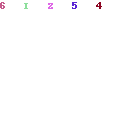Nowadays we see the rise of feminism in every corner of modern society. In modern societies, women have already got almost all the rights they have fought for, for ages. In urban areas it is almost, 80% of women are educated and enjoy all the basic rights. Women supporting women is everywhere in trend. But do we actually think that women supporting women is anyhow relevant in the countryside of India? Now get the latest education news only on BlogJab.
In Rural areas, one out of the hundred ladies will stand for some other lady. This is not their selfish nature or behavior of being reluctant to help but the family and societal pressure they face in every second of their life. Women are reaching beyond the seven layers of atmosphere but the women in the rural parts of India can not even think of stepping their feet outside their house. From social to health, they are deprived of every aspect of life.
A girl child brought up in a healthy and wealthy environment of towns will always dream of sitting at the chair, wearing her comfortable clothes, and working on the task she loves to do. But on the other hand, a girl from a rural background could only think about how she could mold herself to the demands of the family and society. She will always dream to fit in with the expectations of her family to save herself from getting exploited. BlogJab offers the best and the latest education articles on its official website.
Needs and barriers.
The constitution of India offers free primary schooling for all genders up to the age of fourteen. The literacy rate of females is 39% whereas the literacy rate of males is 64%. Around forty percent of the women in a total of 330 million women population is educated. According to this data obtained from the Census of 1991, around 200 million women are illiterate.
According to the recent data, 50 percent of the rural women are literate whereas in Urban areas women’s literacy rate is almost 80%.
After numerous researches and studies, it has come to light that illiteracy in women arises low earning possibilities, increases the level of fertility and mortality, bad nutritional status, low earning possibilities, and less autonomy in the household. The lack of education in women also leaves a negative and poor impact on her Children’s health and well-being. For example, a recently held survey shows that in India it has been found that mother’s literacy is inversely pro[ortional to mother’s level of education. Hence, there is an utmost need for at least a basic level of education in women. Out of all the literate women in India, only 60% have primary education or less. Moreover, just this much level of education is not enough to plan meaningful improvements in the status of these women.
The barriers arise in the way towards educating women are as follows;
Lack of awareness
People living in rural areas lack a basic understanding of women’s education and their health. Rural areas in India are dominated by agro-based culture. Where father to son everyone is engaged in some kind of activities. For them having a large family with lots of children turns out to be an asset. And they rather sending their girls, sisters, and wives to the schools they prefer to make them indulged in household activities and taking care of all the children. Women are only considered as an animal who will work day and night give births and then take care of the entire family. But with the dawn of LPG (liberalization, privatization, and globalization) every corner of the world is getting industrialized. With the increase in the manufacturing sector and service sector, the need for a workforce is also increasing. Women with their intelligence and strategic plans can easily contribute to the development of the nation.
The high rate of Dropouts
Even if the girl child is enrolled in the school, with the family and societal pressure they can’t continue their studies. It is has been found that around 50% of girls drop out of school within standards 1 and 5. They are also been taken out of schools after they reach their puberty.
Gender bias thinkings
The rural family always chooses to educate a son rather than educating a daughter. As above mentioned in rural areas agro-based occupations are chosen by most of the families and since all the male members will go to work then they consider that there has to be someone to look after the family. So they invest more in sons than in daughters.
Lack of Female Teachers:
If in any rural area there will be no educated women then who will be the female teacher of that area? Girls feel more comfortable with lady teachers. Where educating women is considered a sin then how the people of that place will be focused on employing female teachers in that region.
Conclusion
According to me, we must not overdose on feminism in societies where women are already privileged but to reach out to the ladies who are actually deprived.
Education is the key to setting an ideal society. Education broadens up the mentality of the people and opens their eyes to differentiate the right and the wrong. The government should take strict measures on these issues and women education should be mandatorily be promoted.













